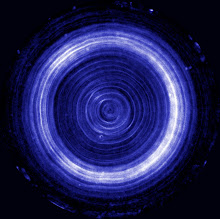Dolphin and Whale Glyphs
A Novel Technique for Decoding Cetacean Language
A Collaboration by John Stuart Reid and Jack Kassewitz
When Europeans first traveled to Egypt, the hieroglyphic language they found was a mystery. The splendors of Egypt were visible for all to see but with no understanding of its written word, it was not possible to gain an insight into the minds of the people who created that great civilization. In fact, their written language remained a mystery until the early 1800's when Englishman, Thomas Young and Frenchman, Jean-Francois Champollion discovered key components of the "primer", the keys that unlocked the code to the ancient Egyptian language.
Although we can appreciate the beauty of dolphins and whales (cetaceans), their language has remained a mystery to us throughout history. Now, with the advent of the CymaScope, dolphin and whale sounds can be made visible. Such visible sound patterns are called "CymaGlyphs" and we have begun to create a library of what could be thought of as the hieroglyphic language of cetaceans.
By studying the body language and behaviors of dolphins and whales in relation to the sounds they make, we anticipate that a "cetacean primer" will emerge, and like the one that deciphered hieroglyphs, it will allow us to glimpse a once hidden world. The language of dolphins and whales may soon be unlocked.

